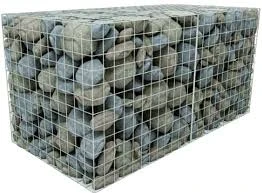-
 Phone:
Phone: -
 Email:
Email:

Different Varieties and Uses of Barbed Wire for Various Applications
Types of Barbed Wire A Comprehensive Overview
Barbed wire, a type of fencing material with sharp edges or points arranged at intervals along strands of wire, has been a crucial development in agricultural and military history. Its advent transformed land management and security practices, making it a popular choice for ranchers, farmers, and properties requiring protection. This article explores various types of barbed wire, their distinct features, and their applications.
1. Standard Barbed Wire
The most common form of barbed wire features twisted strands with pointed barbs, typically measuring 4 to 5 inches apart. This design serves as an effective deterrent against intruders and animals, making it ideal for agricultural fencing. Standard barbed wire is generally made from galvanized steel to prevent rust, thereby ensuring durability in diverse weather conditions.
2. Heavy-Duty Barbed Wire
Heavy-duty barbed wire is constructed with thicker gauge wire than standard options. This increased durability means it can withstand greater tension and is less likely to bend or break under pressure. This type is often used in areas with high-security needs, such as industrial sites or military facilities, where a stronger deterrent against unauthorized access is necessary.
3. Stainless Steel Barbed Wire
For applications requiring exceptional durability and resistance to corrosion, stainless steel barbed wire is recommended. While it comes at a higher cost, its long lifespan makes it a worthwhile investment for marine environments, high-humidity areas, or regions with extreme weather. This type of barbed wire maintains its sharpness and effectiveness over time, reducing the need for frequent replacements.
types of barbed wire

4. Electric Barbed Wire
Electric barbed wire combines the traditional barbed design with electrical current. This type serves as an additional deterrent, delivering a shock to any intruder that touches it. Electric barbed wire is commonly used in high-security areas, such as prisons or military bases. It is essential to note that proper installation and regular maintenance are crucial to ensure safety and effectiveness.
5. Double Twist Barbed Wire
Double twist barbed wire consists of two twisted strands that create a more robust structure than single-strand versions. The barbs on this wire can be placed at either side or alternating on different sides, providing enhanced security. This type is often used for larger enclosures, such as around farms or estates, where a strong physical barrier is required.
6. Creative and Decorative Barbed Wire
In recent years, decorative barbed wire has gained popularity in art and landscaping. Crafted from various materials and designed to be aesthetically pleasing, these creations can serve decorative purposes while still paying homage to the functionality of traditional barbed wire. Artists and designers often use these variations to create unique installations, blending security with creativity.
Conclusion
Barbed wire remains an invaluable tool in the realms of agriculture, security, and art. Understanding the different types and their specific applications can help landowners and security professionals select the most suitable option for their needs. Be it standard barbed wire for traditional fencing, heavy-duty versions for added security, or creatively designed varieties for artistic endeavors, barbed wire continues to play a significant role in protecting property while adapting to modern needs. With advancements in materials and design, the future of barbed wire remains promising, positioned at the intersection of utility and creativity.
-
Wire Mesh for Every Need: A Practical SolutionNewsJul.25,2025
-
Steel Fences: Durable, Secure, and Stylish OptionsNewsJul.25,2025
-
Roll Top Fencing: A Smart Solution for Safety and SecurityNewsJul.25,2025
-
Cattle Farm Fencing Solutions for Maximum SecurityNewsJul.25,2025
-
Affordable Iron Binding Wire SolutionsNewsJul.25,2025
-
Affordable Galvanized Wire SolutionsNewsJul.25,2025
-
Wire Hanger Recycling IdeasNewsJul.25,2025








